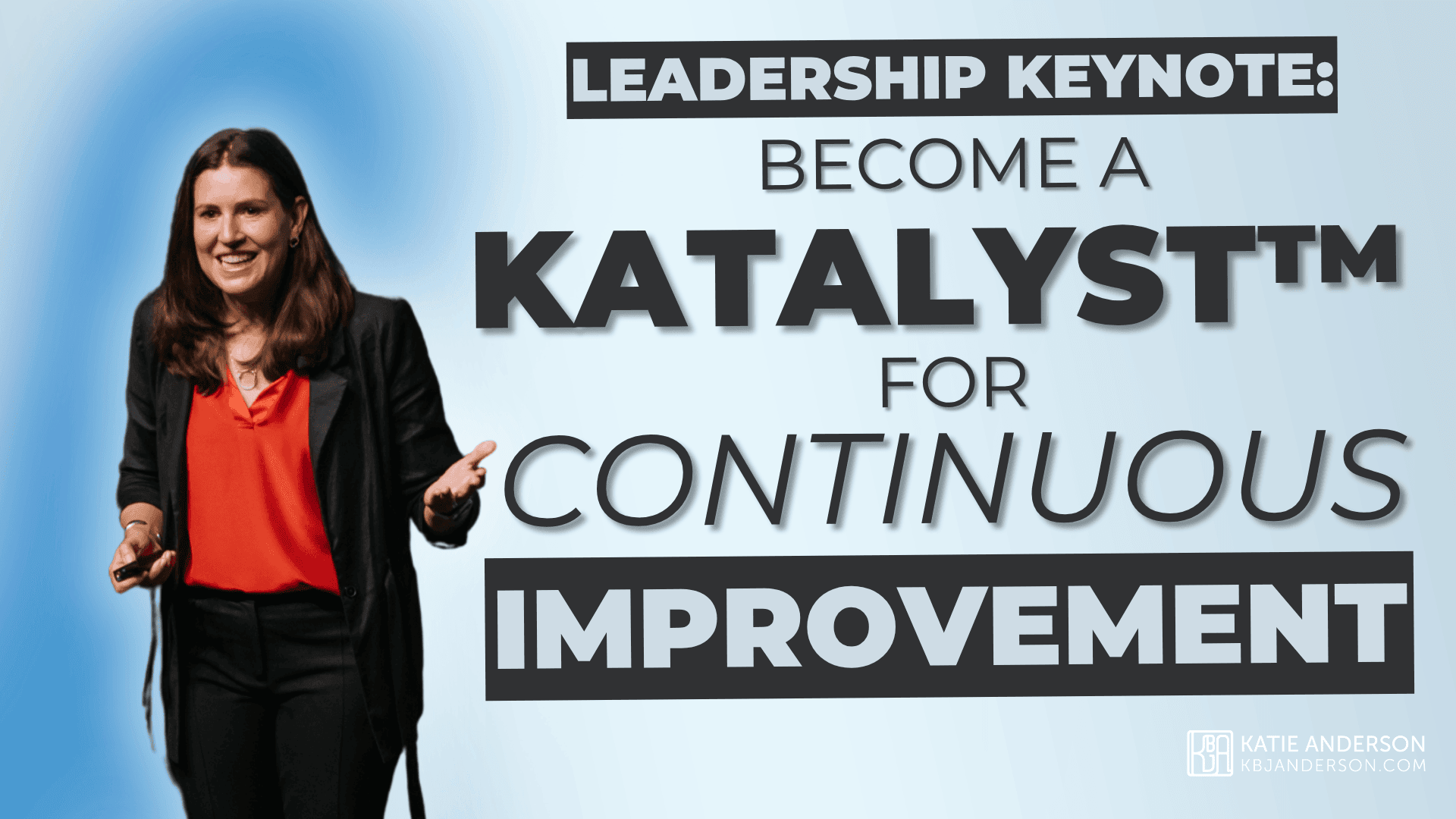You may have asked yourself: “Does every problem require an A3?”
Maybe even you’ve asked: “What is an A3?”
Or: “What are A3 problem-solving tools?”
Or: “What are other ways of problem-solving?”
I’m often asked these questions by clients and readers of this blog, and thought that you might have the same question too.
(I’ve also been asked about the various A3 problem-solving tools out there.)
My short answer to the question “Does every problem require an A3?” is: NO.
My longer answer is that you should match your problem-solving process with the level of complexity of the problem at hand.
Three problem-solving tools and processes
In this post, I share three different problem-solving tools and approaches I’ve used in different organizations based on the level of complexity of the problem:
- A3 problem-solving framework and process for complex problems (often cross-functional)
- “Simple” four-box or A4 framework and process for problems localized to one area
- “Situation-Target-Proposal” framework and process for daily improvements and “just do-its”
Click here to get a copy of the four-box problem-solving tool described in more detail below!
The Foundation of Problem-Solving: PDCA, PDSA, or – even better – SAPD
All three of the problem-solving tools and processes explored in this post support the basic problem-solving Plan-Do-Check-Act (PDCA) cycle.
They serve the dual purposes of: 1) solving problems and 2) developing problem-solving capability in others.
Don’t forget to study and learn!
When talking about the cycle of continuous improvement, I actually prefer to use “Study” instead of “Check” and to flip the acronym to start with studying: Study-Adjust-Plan-Do. SAPD.
Starting with “Study” is a subtle, but powerful shift in our mindset — and our actions. It emphasizes the importance on the studying and adjusting that happens from plans and the scientific method.
Set a goal, and learn your way towards it. Too often we simply just just “Plan-Do-Plan-Do”.
We need to study, reflect, learn, and course-correct —adjust and move forward.
You can read more about this in an article I wrote about SAPD, here.
Three tools and frameworks to support problem-solving
Words of caution: it’s not about the problem-solving tools or template, but the thinking processes
I write this post with some words of caution. If your goal is to create an organization filled with problem solvers, remember that it’s not about the tool(s), but rather the thinking process, the coaching process that supports problem-solving, and the learning process that comes out of it.
It’s not about the tool(s), but rather the thinking process, the coaching process that supports problem-solving, and the learning process that comes out of it.
1. Problem-Solving A3 process for complex problems
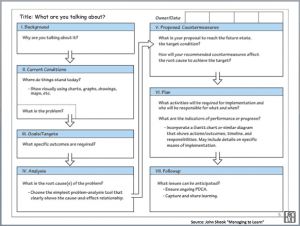
What is an A3 problem-solving method? And when should we use it?
A3 problem-solving reports support root cause analysis and the development of a series of experiments conducted to close the gaps between target and actual performance.
This is how I described what an A3 is in my book Learning to Lead, Leading to Learn:
“A3” refers to a size of paper in Japan, Europe, and other countries (equivalent to 11 inches x 17 inches in the United States).
At Toyota, A3 paper is used as a communication platform for many situations, including problem-solving, strategy (hoshin kanri), and project proposals.
The format of the A3 changes based on the situation. Regardless of the format, an A3 is not intended as a template to be filled out, but rather a guide to tell a concise story about a situation, visualized on one piece of paper, and a method to communicate that story with others.
A3 problem-solving reports are best served for problems that are complex, that cross organizational boundaries, or are ones that “we’ve been working on for years”.
A3s can be strategic in support of strategy deployment (hoshin kanri) or can be focused on a complex organizational problem – as shown in the image here.

More information on A3 problem-solving tools, formats, and thinking
For those of you unfamiliar with what an A3 is, there are many great resources out there to learn about the technical and social aspects of problem-solving using the A3 problem-solving process.
I recommend John Shook’s book “Managing to Learn” as the best practical overview of the A3 learning and coaching process.
As a complement, in my bestselling book Learning to Lead, Leading to Learn, written about the experiences of John Shook’s manager, Isao Yoshino. In it I share a story about John Shook’s first foray into A3s, how to write them, and the history of how A3 thinking became the standard for communication and problem-solving at Toyota:
In his book “Managing to Learn: Using the A3 Management Process to Solve Problems, Gain Agreement, Mentor, and Lead”, John Shook describes the technical and social components of A3s through a fictionalized story based on Shook’s experience reporting to Yoshino and other managers. Through the book, the manager character works closely with his subordinate as he goes through the process of learning how to learn through developing a problem-solving A3.
The leader stamps his [or her] hanko [or signature] to “sign of” that he approves of the process the A3 owner took to prepare the document.
Yoshino describes the hanko’s significance: Putting your hanko on A3 report is evidence to show that you, as the boss, have gone through your subordinate’s A3 and have provided necessary input or advice. If your subordinate’s A3 is considered to be still immature or poor in its analysis, for example, it means that his or her boss has not done their job right.
You can also learn more about A3 thinking in this post, “Toyota Leadership Lessons: Part 8 – The A3 Isn’t a Magical Tool, which I wrote in 2017 based on my discussions with Mr. Yoshino about A3 as a management and thinking process.
I have written a several other blog posts related to A3 thinking including the important social element of A3 coaching such as asking effective questions to support problem-solving thinking, and how A3 thinking can also be used to support personal improvement. Other articles and be found under the tag “A3”.
However, not every problem requires the level of complex root-cause analysis that a typical problem solving or strategic A3 entails.
Below are two other tools and processes that can be used for less complex problems.
2. Localized PDCA problem solving: Target, Actual, Gap, Causes, Experiment
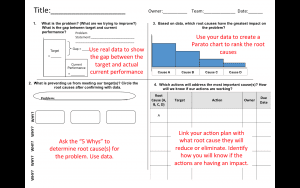
Using a simplified version of the problem solving A3 flow, such as a “four-box” A3 problem-solving template on an A4 (letter) size paper, can be of benefit when:
- a problem is isolated to one working group (in the direct control of one area)
- the root cause isn’t obvious (isn’t a “just do it”)
- and a manager wants to start engaging front-line employees in problem-solving.
I’ve heard different organizations call this “A4 problem solving”, “a simple A3” (even though it isn’t actually on A3 paper), or “four-box” problem-solving.
The simplicity of this process — and the tool shown here to support the process — is that it focuses on the basics of problem-solving:
- Define the problem: What is the target? What is actually happening? The gap is your problem to solve.
- Identify possible causes: Investigate what is going on by going to see and using data.
- Choose which cause to address first: What cause is having the biggest impact on the problem?
- Conduct experiments: Use quick experiments to learn what is working or not working to address the problem.
Four-box A4 problem-solving flow

Front–line managers can use the four-box tool to coach their staff through the problem-solving steps of:
- Identifying a measurable gap in performance
- Conducting basic causal analysis (through data collection and observation)
- Ranking of the causes in order of significance or contribution to the gap/problem
- Putting a plan in place to address root causes, test, and learn – this is the Plan-Do-Check-Adjust (PDCA) cycle.
You can get a blank template of the simple four-box problem-solving tool by clicking here!
I highlighted how this tool and process can be used in an earlier post about a talk I gave at a Lean conference in 2015: “Leading Daily Improvement: Creating New Habits and Practices to Support Continuous Improvement“.
Managers coaching front line employees on how to solve problems
An important element of using this tool in support of developing problem-solving capabilities in an organization is that once a manager learns the basic problem-solving process outlined by the tool, he or she should not be the one doing the actual problem solving (e.g. the one filling out the tool or collecting the actual data).
Instead, the manager’s role is to set or clarify the target for the group, and then to support their team to work through the problem-solving process.
This is an opportunity for a manager to move into a coaching role and support the area staff in doing the thinking by asking effective questions that support their development of problem-solving skills.
Real example managers coaching frontline problem solving
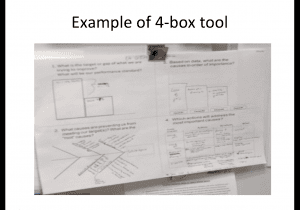
For example, when I was the Director of the Lean Promotion Office at a large healthcare system, we used this tool with great success as a way to teach front-line managers how to develop problem-solving skills in their staff – while simultaneously solving important organizational problems occurring in their areas.
Managers would choose a metric in which their area was underperforming, clarify the target of what should be happening, and ask their staff to help take ownership of collecting data and thinking about root causes and possible countermeasures.
The team would display the four-box problem-solving tool at their local visibility boards. At weekly (or sometimes more frequent) stand-up meetings, managers would ask their staff questions to support their problem-solving process across the four boxes, as well as ask how they could support the team’s next steps.
Target-Actual-Gap-Please Explain
To support both problem-solving and people development, would ask questions such as
“What is the target?”
“What is actually happening?”
“What is your thinking for the reason behind the gap (the problem)?
“Please explain”.
This refrain — “Target. Actual. Gap. Please Explain” — is now ingrained in my head whenever I think through a problem or support others in problem-solving and is a trigger to ask open-ended questions around all three to support deeper thinking.
Make Thinking Visible
Another benefit of this problem-solving tool and process was at “Gemba rounds” where senior leadership would come to check on the performance status of the area, managers and the staff now had a way to make visible their thinking about how they were closing the gap on important problems, and senior leadership had an opportunity to see how their managers were developing their coaching skills.
A3 versus A4 four-box / simple problem-solving process
Of course, a regular A3 problem-solving process could also be used to address localized problems too, if the manager is the one leading the thinking process for a more complex process.
However, we found that if the goal was for the manager to engage his or her staff in the problem ownership, we found that a more simplified approach of the “four-box” A4 format was an easier way to introduce problem-solving / PDCA thinking to the frontline and that A3 problem-solving tools were better used for cross-functional problems.
3: “Just do-its”, daily improvement ideas, and everyday kaizen
In contrast to the above tools, some problems are “just do its” – the root cause is known and a quick fix can be put into place.
Many times in organizations, people do not come forward with their ideas for small improvements. Using processes and tools to engage everyone, from the front-line to senior leaders, in addressing the small problems that they encounter every day is a fundamental part of creating a “kaizen” or continuous improvement culture.
Employee suggestions
Many organizations choose to use employee suggestions or idea forms to address these types of problems. Employees put forward ideas for problems that can be solved with simple solutions, which are then reviewed by the manager and the team.
“Situation-Target-Proposal” tool

At Packard Children’s Hospital at Stanford University, where I worked for nearly six years, we used a form called “STP” (which stood for “situation, target, proposal”). It fits onto an A4 (letter) sized paper cut into quarters.
On the form, an employee describes:
- the “situation” (what is currently happening)
- the “target” (what should be happening)
- and the “proposal” (their idea for how to move from current to target condition).
At stand-up meetings, the team, with oversight from leadership, then prioritizes the improvements and support needed to put the ideas into place.
Daily kaizen processes in Japan
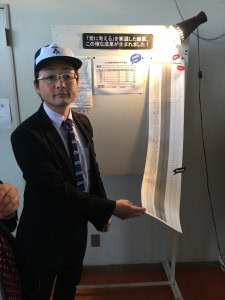
The “STP” process is one that looks very similar to daily kaizen and employee suggestion processes that I saw in Lean thinking organizations in Japan.
I’ve written about these approaches by Japanese companies to daily kaizen in earlier posts, including:
- an organization where the only rule is “no rules” (and that generates 12,000 employee kaizen ideas per year! – see photo here)
- an organization requires all employees from the factory manager to frontline staff to submit at least 3 kaizen suggestions per year
- a hospital that started “everyday kaizen” ideas two years ago
Many of these organizations keep a running tab of the number of suggestions submitted (and implemented) per employee and rewarded that person at the end of the year. They saw this as a process to simulate friendly competition to incentivize (and reward) everyone to engage in daily kaizen.
Remember: It’s not about the tool, it’s about the thinking, the coaching, and the learning
All of the problem-solving tools and formats I’ve described above can be of value when they support the development of individuals as problem solvers in the scope of their responsibility.
The actual tool and form are just a way to make visual the problem-solving thinking, and a structure to support the rigor of the problem-solving process required to deeply understand the problem at hand.
Match the tool with the complexity of the problem. And don’t forget, it’s about the coaching and learning that goes behind it.
The social aspect of coaching and developing problem-solving thinking of others is the real leverage that deep thinking Lean organizations have developed.
What do you think?
What is your experience in supporting problem-solving in your organization? Which A3 problem-solving tools do you use? Are there other tools or processes that you have found valuable? Please share your insights, questions, and comments in the comments area below.
The Leading to Learn Accelerator and Custom Problem-Solving & A3 Learning
One of the modules of the Leading to Learn Accelerator dives into the idea of defining problems, and how to do more structured problem-solving thinking as well as coaching for problem-solving. I also teach custom programs for clients about how to utilize A3 thinking and coaching for problem solving.
Reach out to to explore how I can help you and your teams better practice A3 thinking and coaching for improvement such as asking effective questions.










